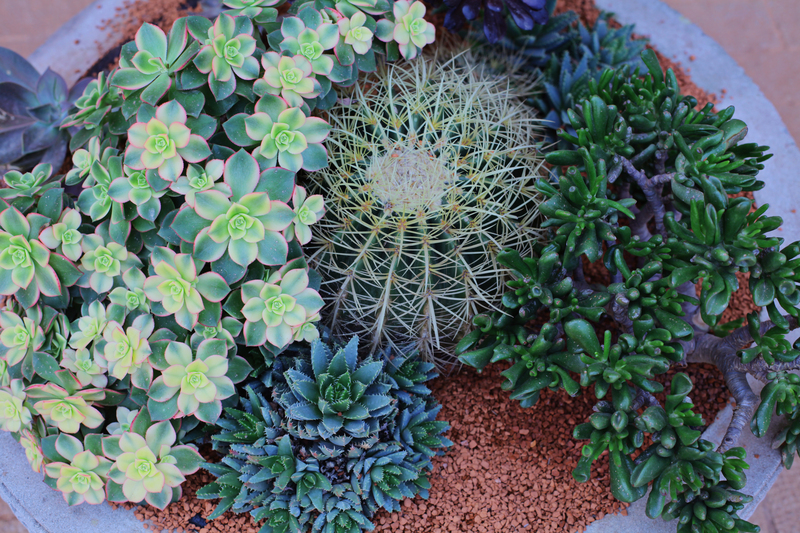Achieve Orchid Perfection with Proper Care
Posted on 22/06/2025
Achieve Orchid Perfection with Proper Care: The Ultimate Guide
Orchids are widely recognized for their stunning beauty, unique shapes, and vibrant blooms, making them a top choice among plant lovers. However, many believe that growing orchids to perfection is a daunting task. The truth is, achieving orchid perfection is simpler when you understand their specific needs. In this comprehensive guide, discover the best techniques, tips, and practices to nurture your orchids into thriving masterpieces.

Understanding Orchid Varieties: First Step Toward Perfection
Before you dive into the nitty-gritty of orchid care, it's vital to understand that there are over 25,000 orchid species and even more hybrids. Some of the most popular varieties include:
- Phalaenopsis (Moth Orchid): Ideal for beginners, with beautiful blooms that last months.
- Cattleya: Known as the "Queen of Orchids" due to their fragrant and ruffled flowers.
- Dendrobium: Adaptable and often blooms multiple times a year.
- Oncidium: Appreciate bright but indirect light.
- Vanda: Boast powerful color and need high humidity.
Tip: Identify your orchid type before embarking on your journey towards perfect orchid care. Each species may have unique requirements, but the care basics remain similar.
The Essentials of Orchid Care for Flawless Growth
1. Light: Illuminating Your Path to Orchid Perfection
Orchids need bright, indirect light to achieve their full potential. Too much sunlight can scorch leaves, while too little can hinder blooming.
- Place on east or west-facing windowsills for optimal light.
- If leaves turn yellow, they may be getting too much sunlight.
- If leaves are dark green, they might need more light.
- Supplement with fluorescent or LED grow lights in dim spaces.
Light is often the most influential factor to achieve perfect orchid blooms.
2. Watering Orchids: Striking the Right Balance
Overwatering is a common mistake for orchid caretakers. The roots love air as much as moisture. Here's how to perfect your orchid watering routine:
- Most orchids prefer to dry out slightly between watering. Insert your finger in the growing medium - if it feels dry an inch down, it's time to water.
- Water about once a week for Phalaenopsis, and every 4-5 days for thirstier types (like Vandas).
- Always water in the morning to allow leaves to dry by evening, preventing rot.
- Never let orchids sit in standing water. Ensure effective drainage.
Pro Tip: Use lukewarm water and avoid wetting the leaves or crown to reduce the risk of rot.
3. Humidity: Creating the Ideal Orchid Microclimate
Orchids thrive in environments where humidity ranges from 40% to 70%. Elevated humidity promotes lush, healthy growth and vibrant blooms.
- Use a humidity tray or pebble tray under your plant's pot.
- Group orchids together to increase humidity around them naturally.
- Use a room humidifier in dry climates or during winter months.
- Mist leaves occasionally, being careful to avoid the flower crow.
Proper humidity is a cornerstone for achieving flawless orchid care.
4. Temperature: The Heat Factor in Orchid Excellence
Orchids are sensitive to temperature changes, which influence their growth and blooming cycles.
- Phalaenopsis: Happy in temperatures between 60?F (night) and 80?F (day).
- Cattleya and Dendrobium: Prefer slightly warmer daytime temperatures (70-85?F).
- Aim for a 10-15?F drop at night to encourage flowering.
- Avoid drafty locations and sudden temperature changes.
Maintaining suitable warmth and coolness is essential for orchid perfection.
5. Orchid Fertilization: Fuelling Stunning Blooms
Feeding orchids correctly is crucial for achieving thriving, robust plants filled with blooms.
- Use a balanced orchid fertilizer (20-20-20) diluted to half strength.
- Feed "weakly, weekly" during active growth, usually spring through fall.
- Flush the potting medium monthly with pure water to prevent salt build-up.
- Reduce feeding during winter or dormant phases.
Note: Over-fertilizing can harm roots and hamper bloom production.
6. Choosing the Best Potting Medium and Containers
Unlike common houseplants, orchids require a special growing medium that mimics their native environment. Standard soil is unsuitable, often resulting in root rot.
- Use blends of bark, coconut husk, sphagnum moss, perlite, or charcoal for proper aeration and drainage.
- Clear plastic pots help monitor root health and moisture levels.
- Repot every 1-2 years or when the medium breaks down or becomes compacted.
- Choose containers with ample drainage holes; never let water collect at the bottom.
The right potting mix is a key component in achieving perfect orchid growth.
Special Tips for Achieving Orchid Perfection
Monitoring Orchids for Pests & Diseases
Even the best cared-for orchids can be susceptible to pests and diseases. Regularly inspect your plants and act at the first signs of trouble.
- Common Pests: Aphids, scale, spider mites, and mealybugs.
- Remove pests using a gentle insecticidal soap or neem oil spray.
- Signs of Disease: Black or yellow spots, mushy stems, and wilting leaves may indicate rot or fungal infections.
- Improve air circulation and remove affected areas promptly.
- Quarantine new plants before bringing them near your collection.
Encouraging Re-Blooming: The Pinnacle of Orchid Perfection
A challenge for many orchid enthusiasts is getting their plant to bloom again. Follow these tips for continuous orchid perfection:
- After flowers fall, trim the flower spike above a node to encourage new bloom spikes.
- Allow the orchid a short "rest" period with slightly less water and feeding.
- Ensure cooler nighttime temperatures for a few weeks to stimulate flowering.
Patience and persistence are virtues when striving for repeating orchid blooms.
Repotting Orchids for Lifelong Health
Over time, orchid potting mixes break down and roots outgrow containers. Repotting:
- Prevents root rot and infections.
- Provides fresh nutrients for vigorous growth.
- Enables inspection and removal of unhealthy roots.
- Repot every 1-2 years in spring, right after blooming.
Repotting can feel daunting, but it is crucial for orchid longevity and perfection.
Advanced Strategies for Seasoned Orchid Enthusiasts
Embracing the Art of Orchid Display
Go beyond cultivation--displaying your orchids beautifully enhances enjoyment and appreciation. Arrange them on decorative shelves, in hanging baskets, or cluster different species for a mini-jungle effect. Remember to rotate orchids regularly for balanced growth.
Orchid perfection extends from plant health to captivating presentation.
Adapting Care for Different Orchid Species
Not all orchids are created equal. While basic care principles hold, some require special attention:
- Vanda orchids enjoy daily water sprays and higher light.
- Paphiopedilum (Lady Slipper) prefer consistently moist, not soggy, soil.
- Miltoniopsis thrive in cooler temperatures and higher humidity.
Research your particular species for custom-tailored orchid perfection.
Fine-Tuning Your Orchid Environment
Perfect orchids thrive in a balance of stable care and environmental tweaks:
- Install a small fan for gentle air movement and to deter fungal growth.
- Maintain a consistent care schedule--orchids love routine.
- Use a rain gauge or moisture sensor for accurate watering practices.
Common Orchid Care Mistakes to Avoid
Even experienced growers sometimes fall into traps. Here are some pitfalls to watch for:
- Overwatering: The leading cause of orchid death due to root rot.
- Under-fertilizing: Leads to sluggish growth and sparse flowering.
- Exposing to direct sun: Causes leaf burn--opt for filtered sunlight.
- Neglecting to repot: Old, decaying medium suffocates roots.
- Ignoring pests: Early intervention is key to preventing infestations.
By sidestepping these missteps, you're already well on your way to orchid perfection.

Frequently Asked Questions on Achieving Perfect Orchids
Q: Why won't my orchid bloom?
A: Insufficient light, excessive fertilizer, or lack of seasonal temperature variation can prevent blooms. Review care routines and adjust accordingly.
Q: What are the signs of a healthy orchid?
A: Firm, green roots, sturdy leaves, and vibrant blooms characterize thriving orchids. Wrinkled leaves or brown roots signal trouble.
Q: Do I need to prune my orchid?
A: Yes. Trim faded flower spikes and remove dead or shriveled leaves to maintain plant health and appearance.
Q: Should I mist my orchid daily?
A: Misting can help with humidity, but avoid overdoing it, especially on the crown. Balance is vital for perfect orchid care.
Conclusion: The Journey to Orchid Perfection
Achieving orchid perfection is not an unattainable dream. By understanding your orchid's needs, providing proper lighting, watering judiciously, maintaining humidity and temperature, fertilizing carefully, and using suitable potting media, you can enjoy vigorous growth and spectacular blooms year after year.
Remember, the pursuit of perfect orchids is a journey--each plant is unique, and learning their distinct personalities makes orchid care a deeply rewarding hobby. Stay patient, observe closely, and adjust care as needed. With the right touch and dedication, you'll witness flawless orchid blooms and become a true orchid perfectionist!
Start your path to orchid perfection today by implementing these expert care strategies, and transform your home into a blooming sanctuary!

